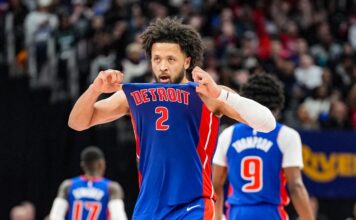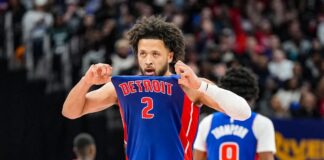

Last night, the MLB reveled in a successful All-Star Game in Cleveland as the second half of the season is about to get underway. For fans thoughts of anything beyond the game itself over the break were nonexistent but for the players, baseball’s future as it pertains to their way of life was very much on their minds.
Major League Baseball has very real, budding labor problems and players are pissed. As we’ve noted before, the MLB and its governors have done an excellent job at circumventing the system to their own benefit while players are left seeing the labor surplus of their efforts continue to line the pockets of the owners without fully reaping the benefits of the League’s overall success.
Take for instance 2018. The MLB saw record revenues, somewhere in the vicinity of $10.8 billion dollars. However, the League spent less on players salaries despite those monetary gains.
Via Forbes:
Last year, the league spent 54.2% of revenues on player compensation, the second-lowest amount dating back to 2010, according to industry sources who wish to remain anonymous. That compensation included not only the big-league salaries that fans have focused on but also players in Minor League Baseball, for which MLB pays. The 54% of total revenues was a drop of nearly 4% from 2017, based on data provided from sources. The last time that the percentage of player salary-to-revenues dropped more than that was in 2012, when the decline was over 6%. In a downward trend over several years, the last time that the percentage of player compensation compared with total revenue rose year-over-year was 2015 (up 4.2%).
Which brings us to the All-Star Break.
Last night, according to USA Today, the average age of the National League’s starting lineup was 25.8 which was the youngest in baseball history. Meanwhile, there were a number of players making the League minimum of $555,000 while the two finalist in the Home Run derby, Pete Alonso of the New York Mets and Vladimir Guerrero Jr. of the Toronto Blue Jays were stuck in the minors all of last season so their respective Big League clubs could avoid awarding them service time.
So how does this add up for the owners?
As it stands right now and how they’ve molded the system into their favor. They can continue to bypass the paydays of some the games biggest stars given the way the League now views players who are over the age of 30. Simply put, when you’re able to bury young stars in the Minor Leagues, bring them up when they’re well beyond ripe while still enjoying years of club control why would teams pay a player who’s on the downside of their career?
Via USA Today:
“So, underpaid on your way in and overpaid on your way out, relatively speaking,” Los Angeles Dodgers starting pitcher Clayton Kershaw said.
Teams no longer view free agents the same, particularly those in their 30s.
“Our free agency structure and our salary structure,” Kershaw said, “is that teams have a right not to pay guys when they’re getting older. The analytics say to pay guys in their prime, the younger guys.
“So, if that’s not going to happen anymore, we’ve got to find a way to get these guys paid during their peak years if they’re not going to be rewarded on the way out.’’
Now there are exceptions. Manny Machado and Bryce Harper both signed massive deals this offseason however both are 27 and 26 years of age respectively. And despite the shit seasons they’ve had so far in 2019 you can only imagine how much less they would have made if free agency hit a few years later for them than it did.
In any sense, if the MLB doesn’t want to see a player’s strike they’re going to have to undergo some massive changes to their labor system because nonetheless, the players are extremely unified and more than likely unwilling to budge on any of their demands.










